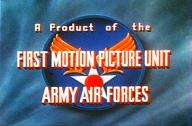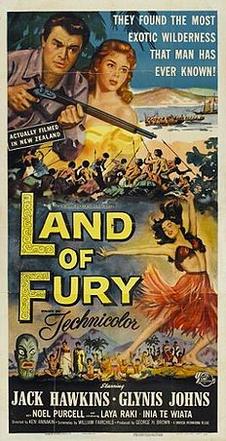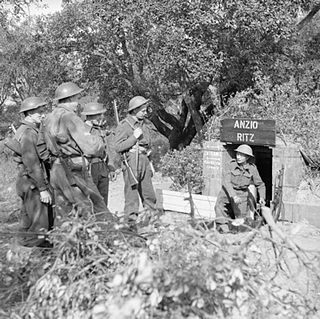
Henry V is a 1944 British Technicolor epic film adaptation of William Shakespeare's play of the same title. The on-screen title is The Chronicle History of King Henry the Fift with his battell fought at Agincourt in France. It stars Laurence Olivier, who also served as a director. The play was adapted for the screen by Olivier, Dallas Bower, and Alan Dent. The score was composed by William Walton.

Ealing Studios is a television and film production company and facilities provider at Ealing Green in west London, England. Will Barker bought the White Lodge on Ealing Green in 1902 as a base for film making, and films have been made on the site ever since. It is the oldest continuously working studio facility for film production in the world, and the current stages were opened for the use of sound in 1931.

Imperial War Museums (IWM), is a British national museum. It is headquartered in London, with five branches in England. Founded as the Imperial War Museum in 1917, it was intended to record the civil and military war effort and sacrifice of the United Kingdom and its Empire during the First World War. The museum's remit has since expanded to include all conflicts in which British or Commonwealth forces have been involved since 1914. As of 2012, the museum aims "to provide for, and to encourage, the study and understanding of the history of modern war and 'wartime experience'."

South East Asia Command (SEAC) was the body set up to be in overall charge of Allied operations in the South-East Asian Theatre during the Second World War.

The South-East Asian Theatre of World War II consisted of the campaigns of the Pacific War in the Philippines, Thailand, Indonesia, Indochina, Burma, India, Malaya and Singapore between 1941 and 1945.

Principal photography is the phase of producing a film or television show in which the bulk of shooting takes place, as distinct from the phases of pre-production and post-production.

Kinemacolor was the first successful colour motion picture process. Used commercially from 1909 to 1915, it was invented by George Albert Smith in 1906. It was a two-colour additive colour process, photographing a black-and-white film behind alternating red/orange and blue/green filters and projecting them through red and green filters. It was demonstrated several times in 1908 and first shown to the public in 1909. From 1909 on, the process was known and trademarked as Kinemacolor and was marketed by Charles Urban’s Natural Color Kinematograph Company, which sold Kinemacolor licences around the world.

The 18th AAF Base Unit, originally known as the First Motion Picture Unit, Army Air Forces, was the primary film production unit of the U.S. Army Air Forces (AAF) during World War II, and was the first military unit made up entirely of professionals from the film industry. It produced more than 400 propaganda and training films, which were notable for being informative as well as entertaining. Films for which the unit is known include Resisting Enemy Interrogation, Memphis Belle: A Story of a Flying Fortress and The Last Bomb—all of which were released in theatres. Veteran actors such as Clark Gable, William Holden, Clayton Moore, Ronald Reagan, Craig Stevens and DeForest Kelley, and directors such as John Sturges served with the 18th AAF Base Unit. The unit also produced training films and trained combat cameramen.

Royal Air Force Bovingdon or more simply RAF Bovingdon is a former Royal Air Force station located near the village of Bovingdon, Hertfordshire, England, about 2.5 miles (4.0 km) south-west of Hemel Hempstead and 2.5 miles (4.0 km) south-east of Berkhamsted.

The Gentle Sex is a 1943 British black-and-white romantic comedy-drama war film, directed by Leslie Howard and Maurice Elvey and narrated by Howard. It was produced by Concanen Productions, Two Cities Films, and Derrick de Marney. It was Howard's last film before his death.

The Seekers is a 1954 British-New Zealand adventure film directed by Ken Annakin. It starred Jack Hawkins, Glynis Johns, Noel Purcell, and Kenneth Williams. The film was produced by the Rank Organisation and was shot at Pinewood Studios with location shooting around Whakatāne. The film's sets were designed by the art director Maurice Carter with costumes by Julie Harris. It was the first major international studio film shot in New Zealand. The film was adapted from the novel The Seekers by New Zealander John Guthrie. It was released in the United States by Universal Pictures as Land of Fury.

Escape! is a 1930 British crime film directed by Basil Dean and starring Gerald du Maurier, Edna Best and Gordon Harker. It was based on the 1926 play of the same title by John Galsworthy, which was adapted again as a film in 1948.
Albert Victor Bramble (1884–1963) was an English actor and film director. He began his acting career on the stage. He started acting in films in 1914 and subsequently turned to directing and producing films. He died on 17 May 1963.

Royal Air Force Film Production Unit was a unit of the British Royal Air Force that produced propaganda films depicting RAF personnel and aircraft both on the ground and in aerial action during Second World War from 1941 to 1945.
The Inter-Services Topographic Department (1940–1946) was a joint British Army and Navy organization created during World War II that was responsible for supplying topographic intelligence for all combined operations, and in particular, for preparing reports in advance of military operations overseas. This is an intelligence unit administered by the Royal Navy.

The Army Film and Photographic Unit was a subdivision of the British armed forces set up on 24 October 1941, to record military events in which the British and Commonwealth armies were engaged. During the war, almost 23 percent of all AFPU soldiers were killed in action; the AFPU was disbanded in 1946.
German Concentration Camps Factual Survey is the official British documentary film on the Nazi concentration camps, based on footage shot by the Allied forces in 1945.

The Army Kinematograph Service (AKS) was established during the Second World War by the British government in August 1941 to meet the increasing training and recreational needs of the British Army. Created by the newly established Directorate of Army Kinematography, whose remit was "to be responsible for providing and exhibiting all films required by the Army for training, educational and recreational purposes", it expanded over the next few years to become the most prominent film production and exhibition section for a major part of the British Armed Forces.

Men of the Sky is a 1942 American Technicolor short propaganda film, directed by B. Reeves Eason. The documentary film reenacted the training of a group of United States Army Air Forces (USAAF) pilots.

John Ford's D-Day footage refers to the motion-picture film shot by 56 U.S. Coast Guard combat photographers and automated cameras mounted on landing craft under the direction of legendary Hollywood film director John Ford on Omaha Beach and environs during the Normandy landings and Battle of Normandy in summer 1944. Director George Stevens landed with the HMS Belfast and shot on Juno Beach. A Supreme Headquarters Allied Expeditionary Forces (SHAEF) timeline reported that 344,000 ft (105,000 m) of film was processed by the Allied communications departments in June 1944.


















